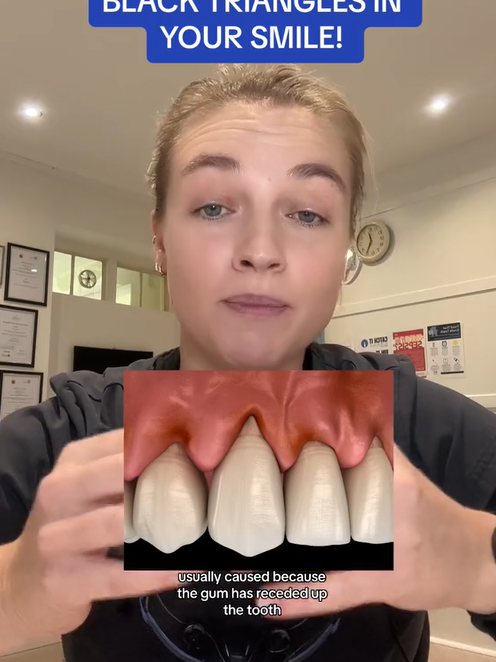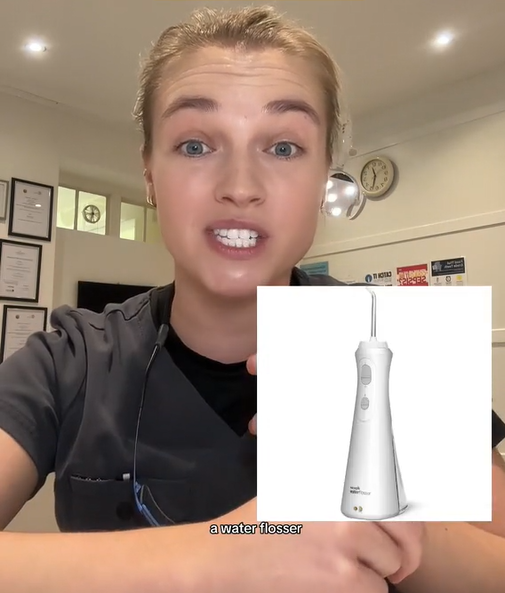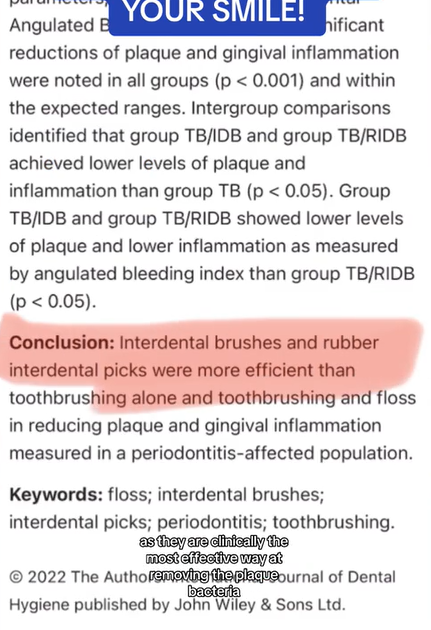People invest thousands to have straight, white teeth by wearing braces, having regular visits to the dentist, and keeping up with all the latest in mouth health. However, no matter how well someone may care for their teeth, things happen as we get older. For example, those little black triangles that sometimes appear in between teeth. Now, Dr. Abdul Azizi, a UK dentist, has explained what they are and how they get there.
Part of an Expert Team
Dr. Abdul Azizi is a Principal Dentist of Harley Private Dental Clinic, a “tranquil and luxurious sanctuary in the middle of a busy city. Where your health and well-being always come first.” The facility, located in Sheffield, England, is run by a team of dentists, including Dr. Azizi. Who, notably, has an impressive educational background in biomedical science and a Bachelor’s in Dental Surgery. Harley Private Dental specializes in a variety of dental care, including general care, implants, and cosmetic work, and is staffed by those who are compassionate and skilled in their field. Recently, Dr. Azizi disclosed that those little black triangles that appear are simply spaces that develop in between teeth. He goes on to explain that there are actually a number of causes for those pesky little black triangles.

According to Experts
Black triangles typically appear around the gum line and trap food or plaque build-up, making them darker or more noticeable. According to the Dr., “Black triangles between your teeth are not inherently dangerous but may be associated with oral health concerns, like gum disease or gum recession.” Continuing that they “are not necessarily a sign of poor hygiene” but can be from things like genetics or tooth shape, size, and placement. He notes that they can sometimes indicate possible oral health concerns and “may warrant dental attention for cosmetic or preventive reasons.” He explained. Note they also should be monitored because, in some cases, the black triangles can result in cavities.

Another key cause could be “gum recession.” This occurs when gum tissue starts to pull away from the tooth—commonly seen as people get older. Bone loss is also a common cause of black triangles, as well as periodontal disease, causing further bone loss. Furthermore, in some cases, they can result from treatments like braces.
Read: Drug Therapy for Tooth Regeneration is Set for Human Clinical Trials Next Year
Another Black Triangle Expert
Alternatively, according to Anna Peterson, also a renowned dentist, those black triangles can actually be a sign of something good, particularly in the case of post-periodontal surgery. The London-based dentist is popular on TikTok with more than 20,000 followers across social media platforms. Peterson has made headlines in recent years for her helpful hints including that using mouthwash right after brushing isn’t good for your teeth. It’s a good idea to do so in between brushing, waiting at least 20-30 minutes before doing so. Peterson has posted a video also addressing the black triangles. In her video she explains that in some cases, the black triangles that pop up in between teeth at the gum line, can be a sign that “inflammation has reduced following periodontal treatment.” Peterson also shares some helpful hints preventing black triangles from forming in between teeth.
While Dr. Azizi and Dr. Peterson both offer helpful perspective and advice, more information can be found from various sources such as Colgate. According to a company whose renowned reputation was built on bringing to the public beautiful and healthy teeth, black triangles can also be the result of pregnancy, diabetes or other medical conditions, as well as the use of tobacco products.

Preventing Black Triangles
Regardless of the cause, there are a few things one can do to help prevent black triangles from forming. Dr. Peterson suggests cleaning in between teeth at least once a day. This can be done either using floss or an interdental brush. Good oral hygiene is the most effective method for preventing any gum diseases or tooth decay; this includes regularly brushing, flossing, and visiting the dentist at least 1-2 times a year.

Treating Black Triangles
Meanwhile, Dr. Azizi explains that for existing black triangles, there is always the option of correcting misalignment with the help of an orthodontist. Some treatment options include gum grafting, veneers, or dental bonding. Moreover, some studies have shown improvement with using a Hyaluronic acid treatment. However, with limited research on this method, it’s unknown how long the effects of the treatment may last. The treatment type will depend on the severity of the black triangles. Sadly, life and time diminish our youth and cause health and dental concerns that can hopefully be minimized with good hygiene practices and dietary habits.

“The best approach to address black triangles between your teeth will depend on the underlying cause and your specific oral health and cosmetic concerns,” explained Dr. Azizi. “It’s important to consult with a dentist or orthodontist to determine the most appropriate.”